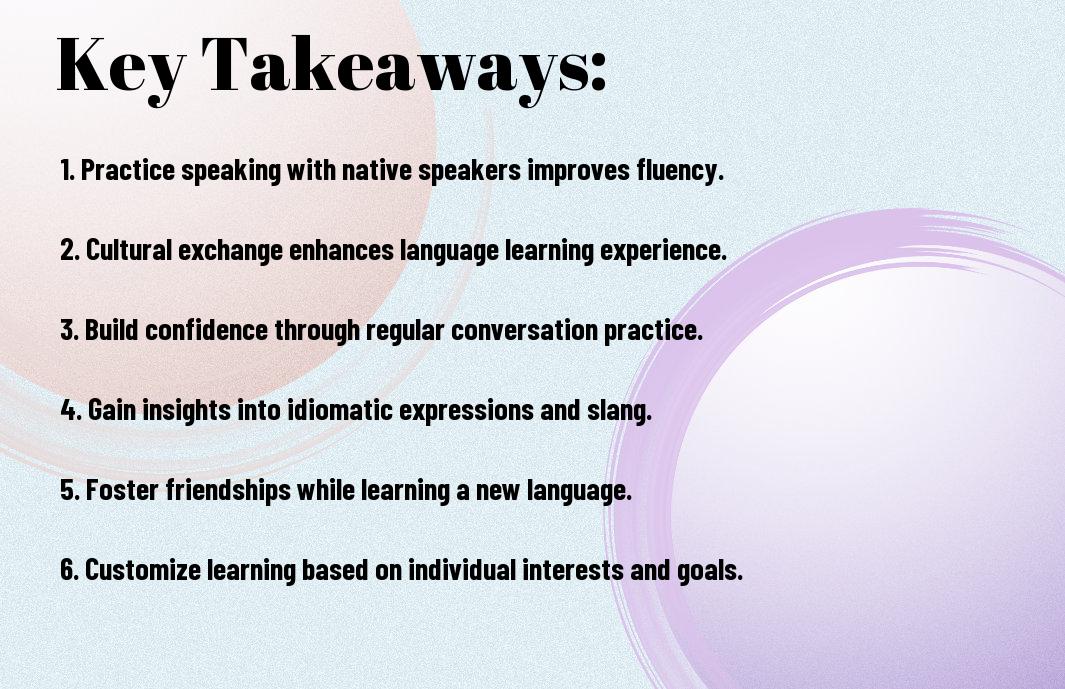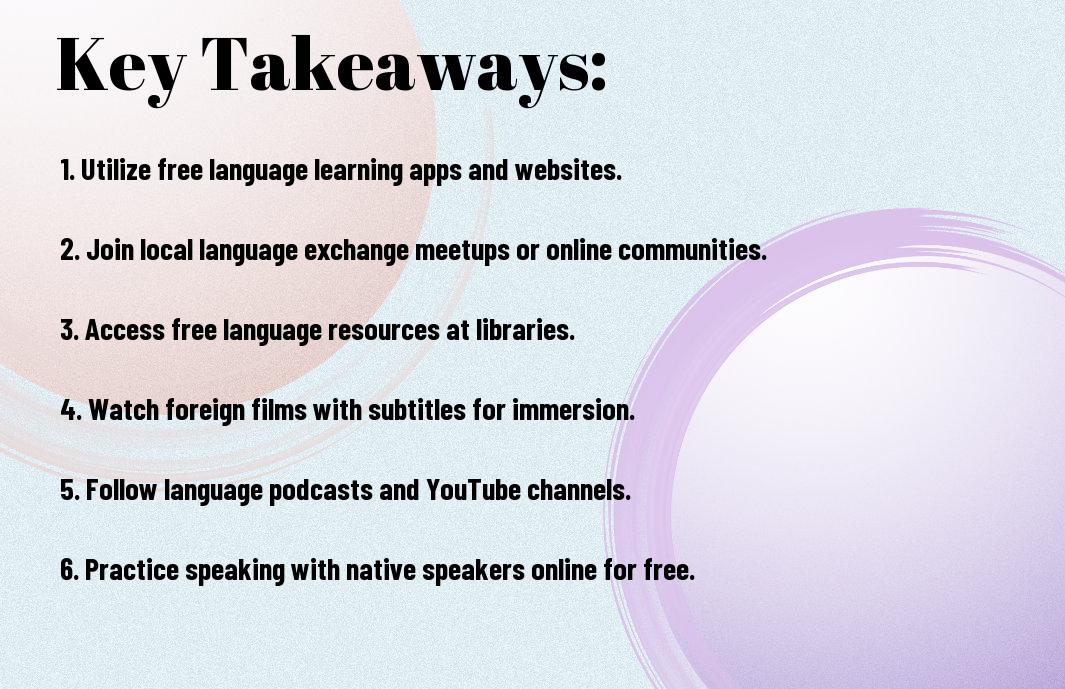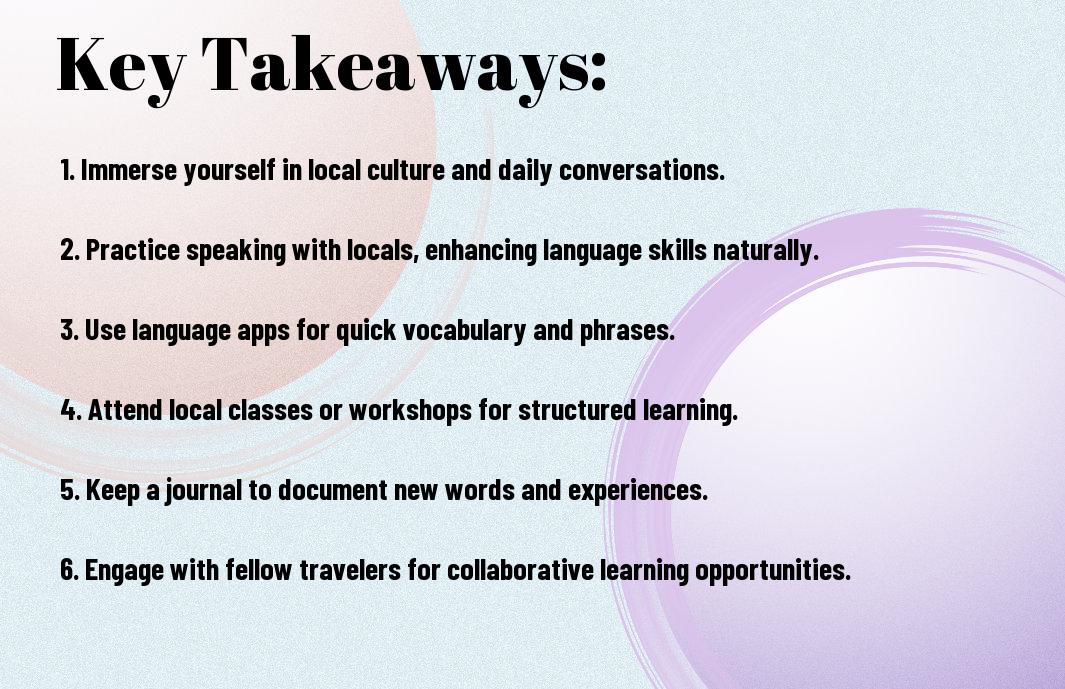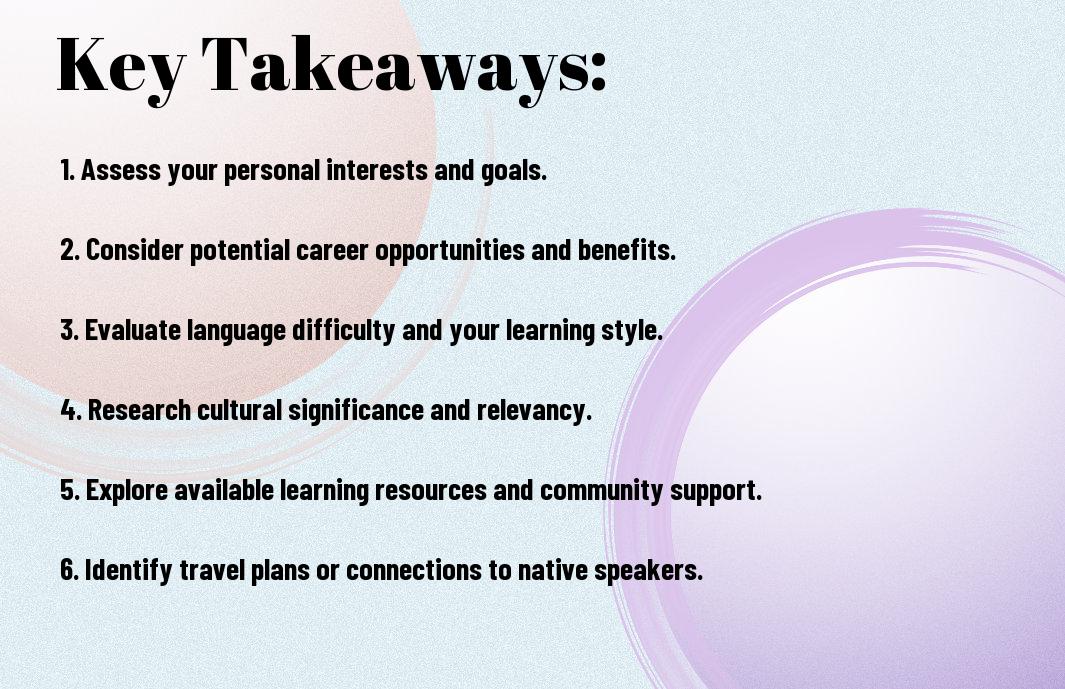You’re about to begin on a challenging journey, one that will test your dedication and perseverance. Your goal is ambitious: to learn a language in just six months. As you start, you’ll face obstacles, but with the right approach, you can overcome them. You’ll need to set a schedule, find effective learning tools, and practice consistently. Your progress will depend on your commitment to the process, and with each passing day, you’ll be one step closer to achieving your goal of becoming proficient in a new language.

Key Takeaways:
- Set specific goals and a realistic timeline to help you stay motivated and focused throughout the language learning process.
- Immerse yourself in the language by listening to native speakers, watching foreign films, and speaking with language exchange partners to improve your pronunciation and vocabulary.
- Use language learning apps and online resources to supplement your learning and provide flexibility in your study schedule.
- Practice active learning techniques such as speaking and writing in the target language to reinforce your grammar and syntax skills.
- Focus on consistent practice and regular review to build confidence and fluency in your target language, even if it’s just 15-20 minutes a day.
Setting Goals
The key to learning a language in six months is to set achievable goals. You need to determine what you want to accomplish and by when. This will help you stay focused and motivated throughout the learning process.
Defining Language Proficiency
Upon establishing your objectives, you’ll need to define what language proficiency means to you. You may want to focus on conversational skills, reading comprehension, or writing abilities, and identifying your priorities will help guide your learning journey.
Creating a Realistic Timeline
Personally, you’ll find that creating a schedule is imperative. You should allocate specific times for learning and practicing the language, ensuring that you make consistent progress towards your goals.
Defining a realistic timeline involves breaking down your goals into manageable chunks, allowing you to track your progress and make adjustments as needed. You’ll need to consider your current level of proficiency, the amount of time you can dedicate to learning, and the resources available to you, in order to create a feasible plan that suits your needs and learning style.
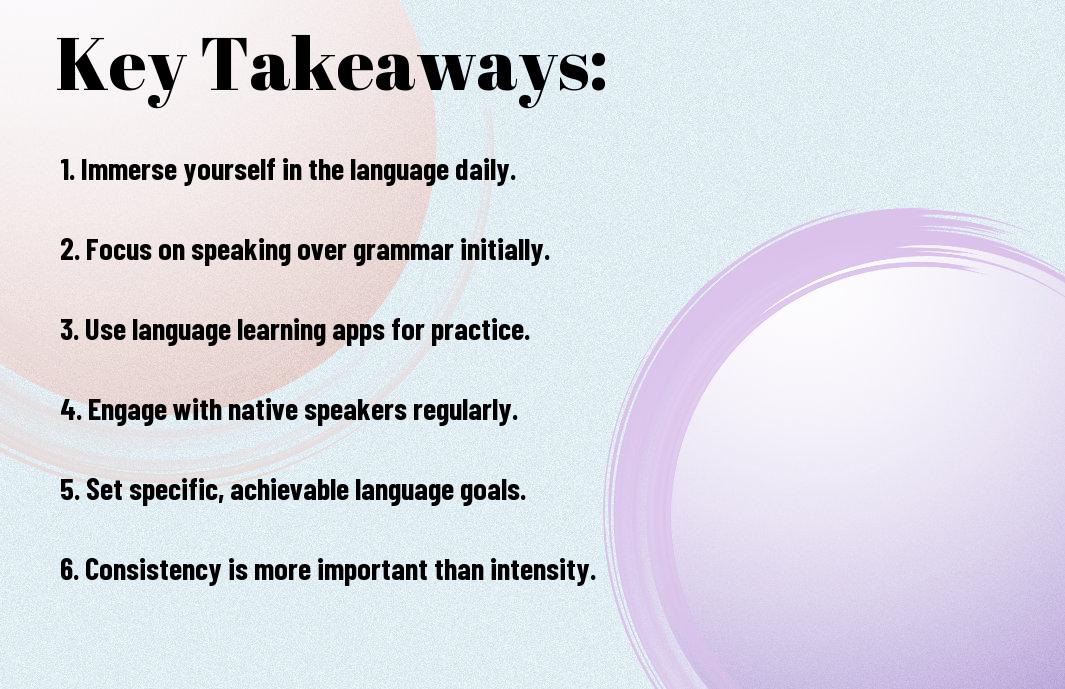
Immersion Techniques
It is imperative to surround yourself with the language you want to learn, and you can find many resources online, such as How to Learn a Language in 6 Months (According to Experts), to help you achieve your goal.
Surrounding Yourself with the Language
Behind the scenes of language learning, you’ll find that immersing yourself in the language is key, and you can do this by labeling objects in your home, listening to music, and speaking with native speakers.
Using Media to Learn
By using media such as TV shows, movies, and podcasts, you can improve your listening skills and get used to the rhythm and sound of the language.
Learn to take advantage of these resources by creating a schedule and sticking to it, setting aside time each day to watch, listen, or speak in the target language, and you’ll see improvement in your skills in no time, as you’ll be constantly exposed to the language and forced to think in it, which will help you learn faster and more efficiently.
Effective Learning Strategies
Keep your goals in mind and stay motivated to learn a language in six months. You’ll need to dedicate time and effort to achieve this goal, but with the right approach, you can make significant progress.
Focus on Grammar and Vocabulary
Beneath the surface of language learning lies a foundation of grammar and vocabulary. You’ll need to build your knowledge of these areas to improve your overall language skills, so focus on learning the rules and expanding your vocabulary.
Practicing Speaking and Listening
Efficiently improving your speaking and listening skills requires consistent practice. You’ll need to find ways to engage with the language, such as watching TV shows or speaking with native speakers, to become more comfortable with speaking and listening.
Strategies for improving your speaking and listening skills include listening to podcasts, speaking with language exchange partners, and immersing yourself in the language as much as possible. You can also try shadowing native speakers, repeating what they say to improve your pronunciation and intonation, and taking notes on new vocabulary and phrases to practice later.
Overcoming Challenges
After starting your language learning journey, you’ll encounter obstacles, but with the right mindset, you can overcome them. Check out How to Learn a Language in 6 Months for more tips. You’ll find that staying committed is key to achieving your goal.
Dealing with Language Barriers
Across the globe, language barriers can be daunting, but you can bridge the gap by practicing consistently and seeking help when needed. You’ll start to notice progress in your language skills.
Staying Motivated and Focused
Along the way, you’ll face moments of frustration, but don’t let them discourage you. You must stay motivated and focused on your goal, celebrating small victories along the way.
At this stage, it’s crucial to identify what drives you and use it to your advantage. You can set achievable milestones, find a language learning buddy, or reward yourself for reaching certain goals. By doing so, you’ll maintain a positive mindset and stay on track to learning a language in six months.
Using Technology to Aid Learning
Your journey to learn a language in six months can be significantly enhanced with the help of technology, providing you with a wealth of resources and tools to practice and improve your language skills.
Language Learning Apps and Software
One of the most effective ways to utilize technology is through language learning apps and software, such as Duolingo or Rosetta Stone, which offer interactive lessons and exercises tailored to your learning style and pace.
Online Resources and Communities
Along with apps and software, you can also leverage online resources and communities, like language exchange websites or forums, where you can practice speaking and writing with native speakers and get feedback on your progress.
Even more importantly, these online communities can provide you with motivation and support, connecting you with fellow language learners who share your goals and challenges, and helping you stay engaged and focused throughout your six-month learning journey, as you work towards becoming proficient in your target language.
Staying on Track
All language learners face challenges, but with persistence and dedication, you can overcome them and reach your goal in six months. Setting achievable milestones and celebrating your progress will help you stay motivated.
Tracking Progress and Adjusting the Plan
Beneath the surface of your daily routine, tracking your progress is vital to identify areas for improvement. You can use a language learning app or a journal to monitor your progress and adjust your plan accordingly.
Seeking Help When Needed
Despite your best efforts, you may encounter obstacles that hinder your progress. You can seek help from a language teacher, tutor, or online community to get back on track and address any difficulties you’re facing.
Plan ahead and don’t hesitate to ask for help when you need it, as this will ensure you continue to make progress and achieve your goal of learning a language in six months. You can join online forums or language exchange websites to connect with other learners and native speakers who can provide guidance and support.
Conclusion
Ultimately, you’ve got the roadmap to learn a language in six months. You’ve set your goals, created a schedule, and immersed yourself in the language. Your hard work and dedication will pay off as you become proficient in your new language. You’ll be able to hold conversations, read books, and understand native speakers with ease, opening doors to new cultures and experiences. Stay committed, and you’ll achieve your goal in no time.
FAQ
Q: What is the most effective way to start learning a language in six months?
A: To start learning a language in six months, it is vital to set realistic goals and create a schedule. Begin by learning the basics of the language, such as grammar rules, common phrases, and vocabulary. Immerse yourself in the language by listening to music, watching TV shows or movies, and speaking with native speakers. Additionally, utilize language learning apps, such as Duolingo or Babbel, to supplement your learning. Consistency is key, so aim to study a little every day, even if it’s just for a few minutes.
Q: How can I improve my speaking skills in a short period of six months?
A: Improving speaking skills in a short period of six months requires practice and dedication. Start by speaking with native speakers, either in person or online through language exchange websites. You can also practice speaking by recording yourself and listening to the recordings to identify areas for improvement. Another effective method is to learn phrases and sentences that are commonly used in everyday conversations, such as greetings, introductions, and basic questions. Furthermore, try to think in the target language as much as possible, and describe your daily activities, thoughts, and feelings in the language you are learning.
Q: What role does consistency play in learning a language in six months, and how can I stay motivated?
A: Consistency plays a significant role in learning a language in six months, as regular practice helps to reinforce new language skills and prevents forgetting. To stay motivated, set achievable milestones and reward yourself when you reach them. Find a language learning buddy or join a language learning community to stay accountable and engaged. Track your progress, celebrate your successes, and don’t be too hard on yourself when you make mistakes. Learn to enjoy the process of learning, and make it a part of your daily routine. By doing so, you will stay motivated and be more likely to reach your goal of learning a language in six months.
